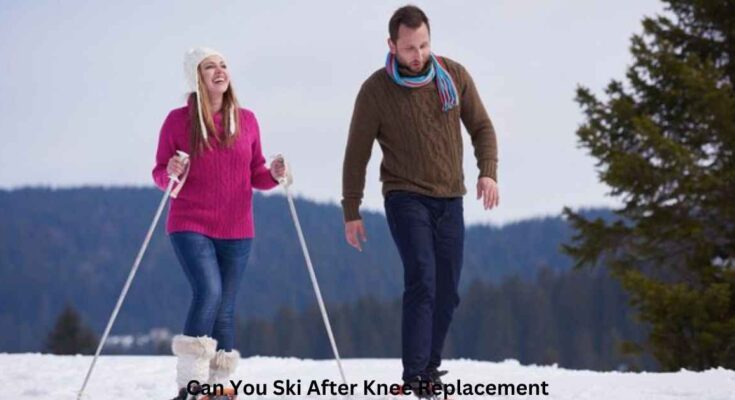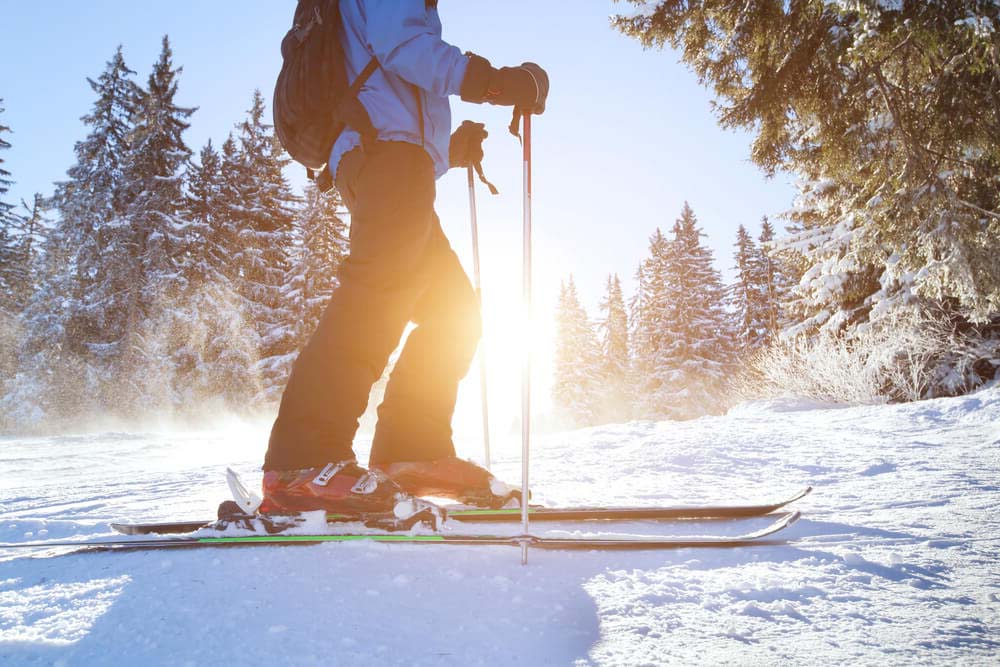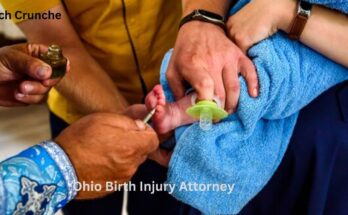Knee replacements have become a standard solution for severe knee pain, arthritis, or injury. For avid skiers, whether they can return to the slopes post-surgery is critical. Skiing is a high-impact sport that demands strong knees, so understanding the possibilities and limitations after knee replacement is crucial.
We will explore the feasibility of skiing after knee replacement, discussing the risks, benefits, and necessary precautions. From the Can You Ski After Knee Replacement types to expert insights, this guide aims to provide a comprehensive understanding for those eager to hit the slopes again.
Understanding Knee Replacement
What is Knee Replacement?
Knee replacement surgery involves supplanting damaged or broken-down knee joint parts with fake parts. It is typically recommended for individuals suffering from severe pain due to conditions like osteoarthritis, rheumatoid arthritis, or traumatic injury.
Types of Knee Replacement Surgeries
Different types of Can You Ski After Knee Replacement surgeries include total knee replacement (TKR), partial knee replacement (PKR), and revision knee replacement. The surgery type depends on the extent of the damage and the patient’s overall health.
Recovery Process After Knee Replacement
Recovery from knee replacement surgery is gradual, often taking several months. It involves physical therapy, pain management, and gradual reintroduction to physical activities. Understanding this process is crucial in determining when to return to skiing safely.
Risks and Benefits of Skiing After Knee Replacement
 Potential Risks of Skiing
Potential Risks of Skiing
Skiing after knee replacement carries potential risks, including increased stress on the new joint, risk of falls, and complications such as loosening the implant. These risks necessitate a cautious approach and thorough preparation.
Benefits of Staying Active
Despite the risks, staying active post-surgery has significant benefits. Ski skiing can improve cardiovascular health, mood, and overall well-being. It also helps maintain the strength and flexibility of the knee joint.
Expert Opinions on Skiing Post-Surgery
Experts generally agree that skiing is possible after Can You Ski After Knee Replacement with proper precautions. However, it requires careful assessment and preparation, including consulting with your surgeon and following a tailored rehabilitation program.
Preparing for Skiing After Knee Replacement
Physical Therapy and Strengthening Exercises
Physical therapy is a cornerstone of recovery. Strengthening exercises targeting the quadriceps, hamstrings, and calf muscles are essential for regaining the stability needed for skiing.
Significance of Adaptability and Scope of Movement
Flexibility exercises help restore the full range of motion in the knee, which is crucial for skiing. Stretching, yoga, and physical therapy exercises can help achieve this goal.
Choosing the Right Equipment
Using the right skiing equipment, including boots, bindings, and skis designed for stability and reduced impact, is crucial. Specialized gear can make skiing safer and more comfortable after replacement.
When to Start Skiing Again
Timeline for Recovery
The timeline for returning to skiing varies from person to person. Generally, it takes about 6 to 12 months after surgery before one can consider skiing, depending on individual progress and the type of surgery.
Signs You’re Ready to Ski
Key indicators that you are ready to ski include pain-free walking, full range of motion in the knee, and the ability to perform strength exercises without discomfort. Consulting with your physical therapist is essential before making a decision.
Consulting Your Surgeon or Physical Therapist
Always seek the advice of your surgeon or physical therapist before returning to skiing. They can assess your recovery and provide personalized recommendations.
Safety Tips for Skiing Post-Knee Replacement
Protective Gear
Wearing protective gear such as knee braces and padded clothing can reduce the risk of injury while skiing.
Techniques to Reduce Impact
Learning and practicing skiing techniques that minimize the impact on the knees, such as using shorter turns and skiing on groomed trails, is essential for safety.
Skiing in Suitable Conditions
Opting for easier skiing conditions on the knees, like soft snow and gentle slopes, can help prevent undue stress on the knee joint.
Modifications and Adaptations
Adjusting Your Skiing Technique
Modifying your skiing technique to reduce knee strain post-surgery is essential. Focus on smoother, controlled movements rather than aggressive turns and jumps.
Specialized Skiing Programs for Knee Patients
Some ski resorts offer specialized programs for individuals with knee replacements or other joint issues. These projects can provide extra help and direction.
Adaptive Skiing Equipment
Adaptive skiing equipment, such as sit-skis or outriggers, can accommodate various levels of mobility and ensure a safer skiing experience.
Common Misconceptions
You Can’t Ski After Knee Replacement”
This is a common misconception. While skiing after knee replacement requires careful consideration and preparation, it is not impossible.
Skiing Will Damage Your New Knee”
Another misconception is that skiing will inevitably damage the new knee. Proper precautions and techniques can minimize the risk, allowing for a safe return to the sport.
Future Outlook
Advances in Knee Replacement Technology
Advances in knee replacement technology make it increasingly possible for individuals to return to high-impact activities like skiing. New materials and surgical techniques are improving outcomes and recovery times.
The Growing Popularity of Adaptive Skiing
Adaptive skiing is becoming more popular, offering individuals with knee replacements and other mobility challenges the opportunity to enjoy the sport safely.
Practical Tips for Skiing After Knee Replacement
Preparing Mentally and Physically
Mental and physical preparation is crucial for returning to skiing after Can You Ski After Knee Replacement. Setting realistic expectations and gradually building strength and confidence are essential steps.
Setting Realistic Goals
It’s essential to set realistic goals for your skiing return. Start with more accessible slopes and shorter sessions, gradually increasing intensity as your confidence and strength grow.
Joining Support Groups and Communities
Joining support groups or communities of skiers who have undergone similar surgeries can provide motivation, advice, and companionship on your journey back to skiing.
FAQs
How Soon Can You Ski After Knee Replacement?
Typically, it takes 6 to 12 months to ski safely after knee replacement. However, this timeline varies depending on individual recovery and medical advice.
Is It Safe to Ski with a Knee Replacement?
Yes, skiing with a knee replacement can be safe if you take the necessary precautions, follow your physical therapy program, and use appropriate equipment.
What Precautions Should Be Taken?
Precautions include wearing protective gear, modifying your skiing technique, skiing in suitable conditions, and ensuring you are physically prepared.
Conclusion
Summary of Key Points
Skiing after knee replacement is possible with the proper preparation, precautions, and mindset. It involves understanding the risks, following a structured rehabilitation program, and adjusting your skiing technique and equipment.
Encouragement and Final Thoughts
Returning to skiing after knee replacement requires effort and patience, but it is achievable. With the proper support and guidance, you can enjoy the slopes again, staying active and embracing the thrill of skiing safely and calmly.


 Potential Risks of Skiing
Potential Risks of Skiing


